Events
| Name | organizer | Where |
|---|---|---|
| MBCC “Doing Business with Mongolia seminar and Christmas Receptiom” Dec 10. 2025 London UK | MBCCI | London UK Goodman LLC |
NEWS
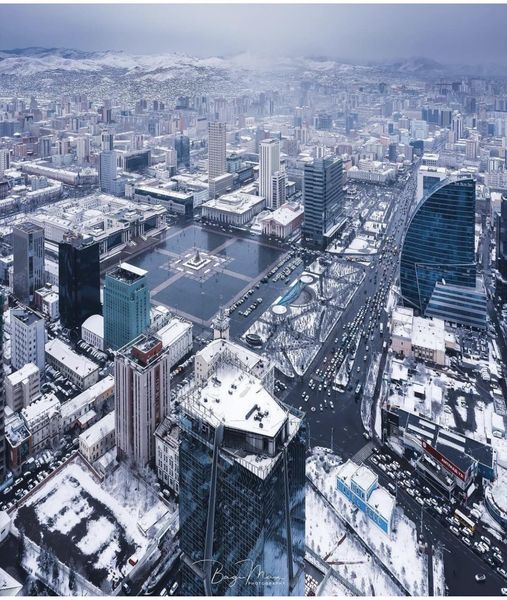
Non-performing loans hit 15-year low www.ubpost.mn
The end-2024 review of the banking sector was presented by the Mongolian Bankers Association and the Banking and Finance Academy on March 17, highlighting stable growth and improved financial indicators. The total assets of the banking sector increased by 23 percent compared to the same period last year, while non-performing loans declined. The upward trend in tugrug deposit yields, which began in early 2024, has also continued.
In particular, the quality of bank credit has significantly improved, with non-performing loans reaching their lowest level in the past 15 years. According to the latest financial review, the overall stability of the banking sector and the improving economic situation have contributed to this positive trend. Non-performing loans, which are classified as such when payments are overdue by more than 90 days, have declined across various economic sectors. The mining sector, in particular, has seen a sharp reduction in non-performing loans, with delinquent loans in this sector decreasing by half. The improved financial health of businesses and individuals has also helped maintain consumer loan quality at a stable level.
At the end of each year, the ratio of non-performing loans to citizens has shown a steady decline, reflecting stronger economic conditions and responsible lending practices. As Mongolia continues to experience growth in key industries, the downward trend in non-performing loans is expected to support overall financial stability.
Bank lending to key economic sectors has grown steadily, supporting business activity. Inflation remained relatively stable due to policy measures aimed at controlling price increases. However, demand-driven inflation began to rise in the second half of the year.
The balance of payments, including the financial account, was in surplus, leading to a significant increase in foreign exchange reserves. This helped stabilize the purchasing power of the tugrug. Despite rising budget revenues from increased mining exports, the state budget remained in deficit, impacted by the costs of two local elections and budget amendments. As a result, Mongolia now faces a dual deficit in both the state budget and the current account, posing a challenge to maintaining economic stability.
Economic growth reached 4.9 percent, driven mainly by the continued expansion of the mining, transport, logistics, services and trade sectors. However, unfavorable weather conditions led to a decline in the agricultural sector, negatively affecting overall economic growth.
Looking ahead, the country plans to maintain high economic growth by capitalizing on rising prices and increased output of mineral exports. The government has set ambitious targets for budget revenues and expenditures, with plans to boost spending on major development projects. Consumer lending also continued to rise, with banks primarily offering loans secured by salaries, pensions, and deposits. The recent increase in wages and pensions has contributed to the growing demand for personal loans.
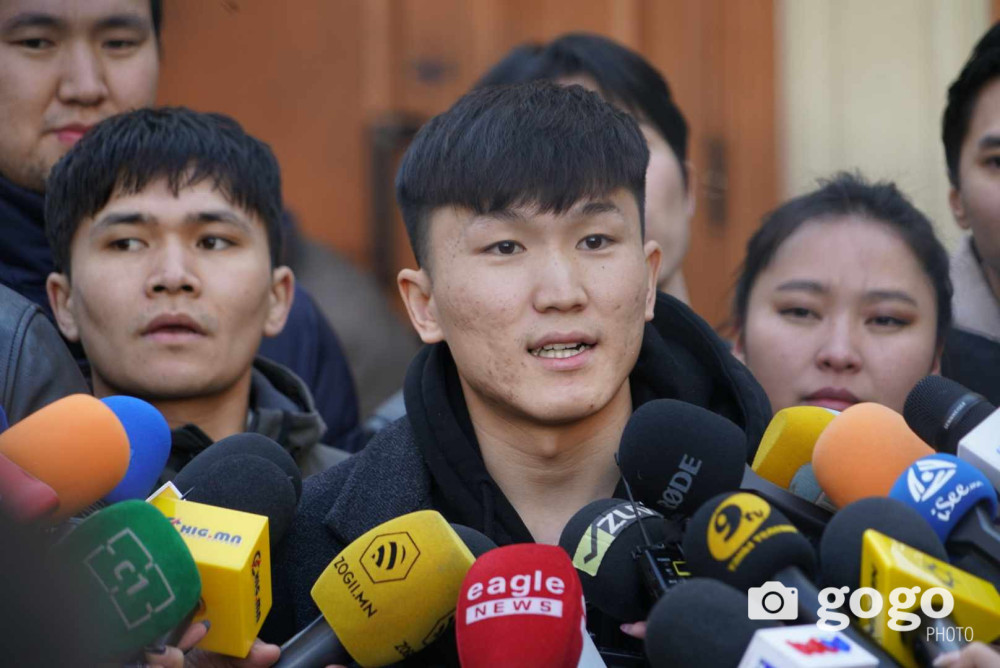
Raid on ‘Noorog’ media raises serious concern over press freedom www.ubpost.mn
Noorog Creative Studio was raided on March 17, with employees’ phones, hard drives and work computers confiscated. The sudden action disrupted the studio’s operations, making it impossible for employees to communicate. The raid and subsequent interrogation have raised serious concerns about press freedom in Mongolia. Many see the case as an effort to suppress independent media and discourage investigative reporting on the electoral process.
According to sources, the raid began at 10:05 p.m., during which statements were taken from employees. With all phones confiscated, no one was able to contact legal representation or colleagues. Employees were informed during the raid that they were under investigation for violating national unity under Article 19.9.1 of the Criminal Code. The article states, “Anyone who organizes acts that incite hostility, discord, separatism, discrimination, violence, restricts rights, or establishes privileges among people based on their race, ethnicity, language, skin color, religious beliefs, or ideology shall be punished with imprisonment for a term of five to twelve years. If this crime is committed by an organized criminal group, it will be punished with imprisonment for a term of twelve to twenty years.”
The Cyber Crimes Division of the Criminal Police Service has accused Noorog of “spreading false information on social media” through a Facebook page named Noorog. This investigation was reportedly initiated based on a complaint submitted via a fake address in a chat message, which claimed that Noorog’s content had caused individuals to consider suicide.Despite these allegations, the National Police Agency has refused to provide additional information regarding the case.
Meanwhile, the Noorog team held a press briefing on March 18. Noorog Media, operating under the slogan “Here is valuable, meaningful and useful content”, had recently completed a documentary film titled “18 Days”. The documentary aimed to invest in the political education of citizens by showcasing real events from the election, which was scheduled from June 10 to 28, 2024. The film followed five different characters over 18 days of the election campaign, capturing the political process from their perspectives.
O.Ulamsaikhan, founder of Noorog Creative Studio, revealed that two 14-terabyte hard drives containing the primary footage of the documentary were among the items seized during the raid. He voiced his concerns over the severity of the case, stating, “There is a history of cooperation between all the media groups in Mongolia, including MCS and APU, and taking pictures of them. So what are you trying to say? If we say cooperation, we did it. It was a business partnership. I see this process as an act of intimidation. I was surprised that a very strong criminal case was filed based on the complaint that came in. But we are not afraid. We did not intentionally attack or slander.”
“We talked about making a film, and soon this happened. The team called Noorog is a new young team. In the 18 days of the election, we followed six different characters in six regions. We followed ordinary citizens who were not party members. We showed the propaganda and the process that was coming to six people. We did it to show how elections are conducted in Mongolia.”
Lawyer B.Narantsetseg criticized the handling of the case, arguing that the application of Article 19.9 of the Criminal Code was unjustified. She noted that while previous cases of this nature were based on complaints from high-ranking officials, this one was initiated based on a citizen’s complaint, raising concerns about procedural fairness. P.Erkhembayar, another legal representative, claimed that investigators attempted to pressure the Noorog team into signing a non-disclosure agreement despite the absence of an official case.
Moreover, the State Prosecutor’s Office issued an official statement regarding the raid, clarifying the legal proceedings surrounding the case. It stated that after reviewing the investigator’s proposal to arrest the named citizens without a court order, the prosecutor determined that the legal grounds for detention had not been established and therefore refused the request for immediate arrest.
In response to these developments, the Press Institute and the Globe International Center issued statements condemning the actions taken against Noorog. They strongly opposed the intimidation, harassment and suppression of individuals and organizations exercising their rights to freedom of speech, expression and publication in Mongolia. The statement emphasized that the detention of the Noorog team members and the confiscation of their work equipment constitute serious violations of Mongolia’s international human rights obligations, specifically Article 19 of the International Covenant on Civil and Political Rights and Article 16 of the Mongolian Constitution, both of which protect the right to freedom of expression and publication. The organizations urged civil society, media institutions and international human rights organizations to closely monitor the situation in Mongolia and to remain vigilant in safeguarding freedom of expression.
The Nest Center, Center for Journalism Innovation and Development, has issued a statement strongly condemning the harassment of independent media organizations. It stated, "Noorog, a young editorial office, operates with professionalism, adhering to journalistic ethics and fulfilling its important role as the fourth estate in serving the public interest. We express our deep regret over the misuse of national unity to undermine press freedom. We firmly stand against this in the democratic Mongolia that respects human rights. In line with the UN Human Rights Committee's General Comment No. 34 on Freedom of Opinion and Expression, we stress that criminalizing media organizations, publishers, and journalists for merely criticizing the government, its policies, or political systems is not a legitimate or necessary restriction on freedom of expression."
"The practice of conducting interrogations outside of working hours is an unacceptable form of harassment and punitive action against the media. We officially express our opposition to such actions, which have unfortunately become increasingly common in Mongolia. We call for an end to these practices and for the protection of independent journalism in Mongolia," they wrote.
Additionally, Members of Parliament S.Erdenebold and S.Tsenguun addressed journalists regarding the detention and investigation. MP S.Erdenebold stated that young media professionals have the right to provide their production services to any business entity and questioned whether thorough checks had been conducted before legal action was taken. He further revealed that he had met with officials from the investigation office to seek clarification on the matter and learned that the investigation was proceeding with the approval of the Prosecutor’s Office. S.Tsenguun emphasized that the Human Rights Subcommittee will formally establish a working group to investigate the case, stating that this is not an isolated incident but part of a broader trend affecting democratic values in Mongolia. She warned that the hard-won democratic principles developed over the past 30 years are now under attack.

New Standards to Come into Effect in Ulaanbaatar This Autumn www.montsame.mn
The Citizens Representative Khural of the Capital City of Mongolia revised the city's standards to ensure a healthy, safe, and comfortable living environment for citizens, and 16 new standards will come into effect on October 1, 2025.
As of now, 38 standards approved in 2022 and 14 approved in 2023 are in effect.
Senior Specialist in Charge of Urban Standards at the Department of Urban Development and Urban Standards E. Gerelt-Od said, “Legal entities operating in the capital are obliged to comply with the general development plan of the city and urban standards, regardless of their form of ownership. According to the new regulation, “all local administrative organizations of the capital should work to ensure the implementation of urban standards.” Urban standards are implemented at four stages: planning, execution, acceptance, and utilization. For example, in the planning stage, the city standards are reflected in tender documents, from architectural planning to detailed drawings, and the standards are adhered to in the construction phase. We are working with relevant organizations in nine districts to obtain information on construction and other projects to be carried out with budget funds this year, and providing engineers and technicians of the contractor companies with methods for implementing urban standards.”
The new standards include:
-General hygiene and safety requirements of cemeteries
-Requirements for the protection of drinking water sources
-General requirements for wildlife-friendly fences in camping areas and state special protected areas
-Requirements for the creation of ponds, rainwater collection and reuse
-Requirements for the exteriors and interiors of general education school buildings
-Requirements for the exteriors and interiors of preschool educational institutions
-Standard design of energy-efficient residential buildings
-General requirements for the exteriors of children's summer camps
-Guidelines for planning public nursery rooms
-Requirements for insulation, exterior facades, and roofing of residential buildings
-General requirements for passenger lobbies at public transport stops/ stations
-General requirements for planning urban roads
-Requirements for the maintenance of roads and road facilities.

Mongolia's foreign trade declines 1.6 pct in 2 months www.xinhuanet.com
Mongolia's foreign trade turnover reached 3.7 billion U.S. dollars in the first two months of 2025, a 1.6 percent decrease compared to the same period last year, according to the National Statistics Office (NSO) on Tuesday.
During the period, exports decreased 8.1 percent to 2 billion dollars, while imports increased 7.3 percent to 1.7 billion dollars.
The decline in exports was mainly influenced by supply of coal, iron ore and combed cashmere from Mongolia to foreign countries.
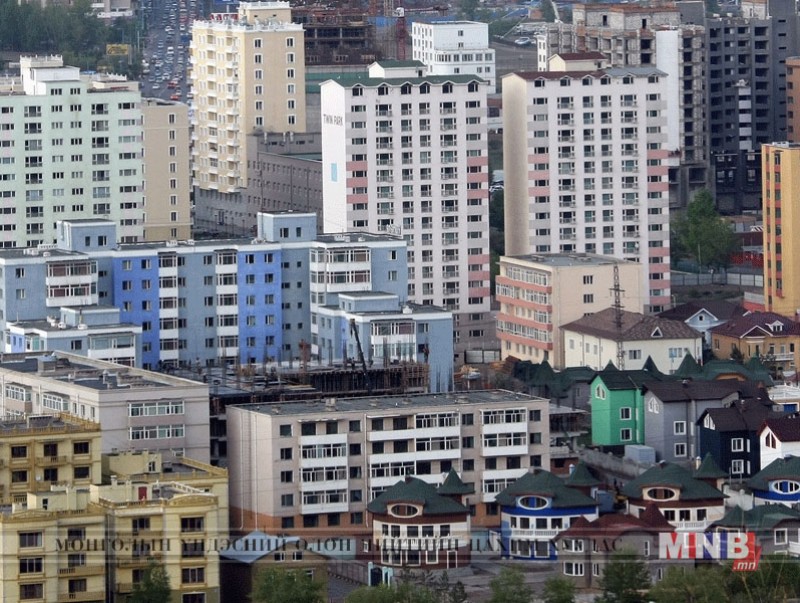
Old apartment prices surge by over 15% www.ubpost.mn
The apartment price index increased by 12.7 percent in February 2024 compared to the same period last year, according to the National Statistics Office.
The price of new apartments rose by 7.4 percent year-over-year and by 0.2 percent compared to the previous month. Meanwhile, the cost of old apartments saw a sharper increase, rising by 15.4 percent from last year and by 1.4 percent from the previous month.
The average price per square meter of apartments now ranges between 4.4 million to 4.5 million MNT. Among districts, Sukhbaatar recorded the highest prices, with new and old housing reaching 5.61 million MNT to 5.67 million MNT per square meter. The district also saw the most significant increase in new housing prices, rising 31.1 percent compared to last year, while Khan-Uul recorded the smallest increase at 3.9 percent. For old apartments, Chingeltei District experienced the highest price growth, with a 33.6 percent increase year-over-year, while Songinokhairkhan saw the lowest rise at 12.6 percent.
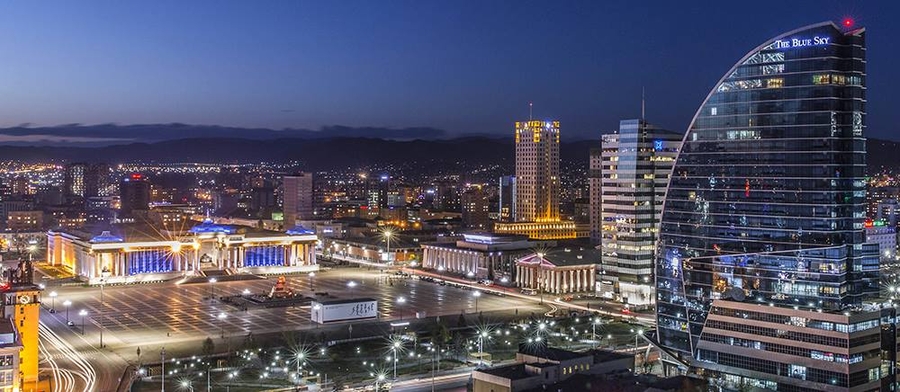
Mongolia Projects 7.4 Percent Economic Growth www.montsame.mn
Mongolia’s economy is projected to grow by 7.4 percent this year.
Due to sustained high levels of coal extraction and increased copper concentrate production at Oyu Tolgoi, the mining sector is expected to see accelerated growth. Meanwhile, the agricultural sector is forecast to recover from this past winter’s severe conditions, the fiscal outlook may weaken, and the implementation of major energy and infrastructure projects will boost investment, thereby supporting growth in non-mining sectors. Over the medium term, construction related to these projects will continue throughout 2026, driving economic expansion. However, starting in 2027, external demand is expected to weaken, investment may decrease, and trade conditions could worsen, which are all factors that may dampen growth prospects.
Furthermore, inflation is expected to exceed the target throughout this year, and then stabilize within the target range beginning in the second quarter of 2026. Rising domestic prices for flour, meat, and meat products will drive up food inflation in the coming quarters. As domestic demand grows and the Mongolian tugrug depreciates, prices for both imported and locally produced goods will rise, keeping overall inflation in double digits throughout this year. From next year onward, with economic activity gradually slowing and the base effect of earlier government-regulated service price hikes fading, inflation is projected to stabilize within the target range from the second quarter of 2026. According to the Bank of Mongolia, factors such as unexpected weather events, greater-than-anticipated pass-through of heating and electricity costs to businesses, the implementation of mega projects, fiscal uncertainties, and exchange rate fluctuations could influence these projections.
In January of this year, inflation reached 9.6 percent, 0.6 percentage points higher than the previous month. Economic activity and wage growth led to higher-than-expected increases in the prices of services, rentals, and imported goods. Rising electricity charges and their subsequent pass-through effects also pushed inflation upward. Of the 410 products in the consumer basket, the number of items whose prices increased by 8 percent or more grew, comprising 48 percent of the entire basket.
Foreign trade turnover was robust, and the transport sector grew by 23.1 percent. Driven by domestic demand, other service sectors expanded by 8 percent, contributing 4.8 percentage points to overall economic growth. Increasing economic activity and imports also boosted tax revenues; net product taxes rose 16.1 percent, contributing an additional 2 percentage points to growth.
Coal production reached 100 million tons, and with rising copper and gold production at Oyu Tolgoi, the mining sector expanded by 10.8 percent. However, the agricultural sector contracted by 28.7 percent due to the loss of 9.4 million head of livestock last year.
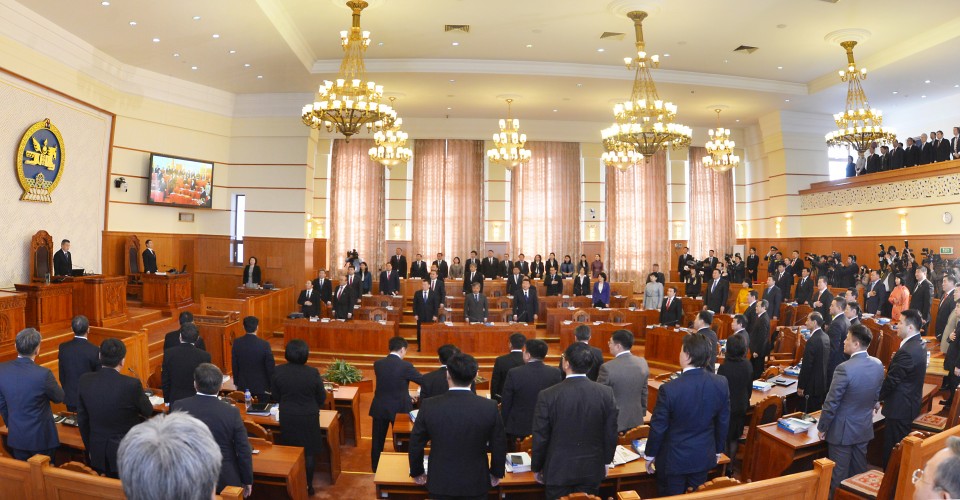
Spring session of Mongolia's parliament opens www.xinhuanet.com
The spring session for the current 126-seat unicameral Mongolia's parliament convened here on Monday.
"Mongolia's parliament should pay special attention to creating the legal basis for the implementation of mega projects and fully support the coalition government for the development and progress of the country," parliament speaker Dashzegve Amarbayasgalan said in his opening remarks.
In addition, he noted that in this critical time of geopolitical and economic tension, Mongolia's parliament, as the highest state authority, needs to adhere to the principles of stability and consistent implementation of public policy, support national unity, stability of foreign policy, inter-institutional activity and coordination, and show the right attitude towards each branch of state activity.
According to the speaker, Mongolia's economy grew by 4.9 percent in the end of 2024, which is a relatively weak indicator compared to the same period of the previous year.
Unfortunately, Mongolia's inflation rate, measured by the consumer price index during the last two months of 2025 remained at a two-digit level, and real incomes and wages of workers, households and enterprises are decreasing because of the rising price.
Therefore, it is more important than anything else in the current situation to maintain the economic activity that was beginning to recover in 2023, he added.
...

South Korea and Mongolia: A Growing Partnership www.insidemongolia.mn
Mongolia and South Korea establish diplomatic relations in 1990, marking the start of their cooperation. Over the years, this relationship strengthens, evolving into a close partnership.
Another One Besides Japan
To date, Mongolia has a Free Trade Agreement (FTA) exclusively with Japan. For the past 2 years, Mongolia has been negotiating a similar agreement with South Korea, and the draft is now finalized. This development raises public concerns, fearing that "South Korea to take the best parts, leaving Mongolia with the scraps." But what exactly are these "best parts" and "scraps"?
Broad Scope: Beyond Trade Tariffs
South Korea, unlike Mongolia, has free trade agreements with 22 countries. The proposed agreement with Mongolia consists of 14 chapters, covering trade, services, and investment, making it more than just a tariff reduction deal, it focuses on broader economic cooperation.
Under this agreement, both countries are expected to grant mutual tariff reductions, ease trade barriers, improve the investment climate, align trade regulations, and expand collaboration in the service sector.
However…
South Korea's presence in Mongolia's infrastructure, mining, and cultural sectors is expanding. For instance, KT Group to begin importing rare earth elements from Mongolia, and South Korea is involved not only in metro projects but also in railway developments. In this context, we import $956 million from the country since 2023, but our exports are 5 times less than that.
To conclude… Japan, Mongolia's only FTA partner, provides Mongolia with significant non-repayable aid. Strengthening ties with South Korea offers clear advantages, but we need to ensure that the benefits to be balanced.The draft provisions of the free trade agreement are designed to promote mutual economic growth, but careful consideration is necessary to address potential imbalances and ensure that both nations benefit equitably from the partnership.
...

Mongolia's total number of confirmed measles cases exceeds 50 www.xinhuanet.com
Mongolia has recorded 24 new cases of measles infection over the past 24 hours, bringing the national caseload to 51, according to the country's National Center for Communicable Diseases (NCCD) on Monday.
According to Mongolian doctors, measles is caused by a single-stranded, enveloped RNA virus with one serotype.
In view of this, the NCCD urged parents to pay attention to the symptoms of measles at an early stage among their children and seek emergency medical care immediately.
Measles is a highly contagious viral disease transmitted by respiratory droplets and direct contact.
Common complications include fever, dry cough, runny nose, sore throat and inflamed eyes. The disease can be prevented by immunization.
There is no specific treatment for measles, and most people recover within two to three weeks.A
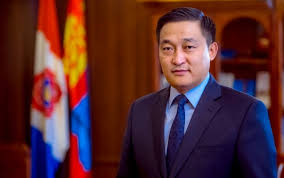
Speaker of the Parliament of Mongolia to Pay an Official Visit to the United Kingdom www.montsame.mn
At the invitation of Speaker of the House of Commons of the United Kingdom of Great Britain and Northern Ireland Lindsay Hoyle, Chairman of the State Great Khural of Mongolia Amarbayasgalan Dashzegve will pay an official visit to the United Kingdom of Great Britain and Northern Ireland on March 18-23, 2025.
The United Kingdom of Great Britain and Northern Ireland is Mongolia’s third neighbor and an important partner in Europe. This official visit is the first visit by the Speaker of the Parliament of Mongolia to the United Kingdom of Great Britain and Northern Ireland. The official visit aims at expanding relations and cooperation between Mongolia and the United Kingdom of Great Britain and Northern Ireland, strengthening mutual understanding, increasing the frequency of high-level dialogues, and stimulating cooperation between the Parliaments of the two countries.
Also, the visit is expected to create a favorable legal environment to foster bilateral cooperation in economy, energy, and education.
- «
- 1
- 2
- 3
- 4
- 5
- 6
- 7
- 8
- 9
- 10
- 11
- 12
- 13
- 14
- 15
- 16
- 17
- 18
- 19
- 20
- 21
- 22
- 23
- 24
- 25
- 26
- 27
- 28
- 29
- 30
- 31
- 32
- 33
- 34
- 35
- 36
- 37
- 38
- 39
- 40
- 41
- 42
- 43
- 44
- 45
- 46
- 47
- 48
- 49
- 50
- 51
- 52
- 53
- 54
- 55
- 56
- 57
- 58
- 59
- 60
- 61
- 62
- 63
- 64
- 65
- 66
- 67
- 68
- 69
- 70
- 71
- 72
- 73
- 74
- 75
- 76
- 77
- 78
- 79
- 80
- 81
- 82
- 83
- 84
- 85
- 86
- 87
- 88
- 89
- 90
- 91
- 92
- 93
- 94
- 95
- 96
- 97
- 98
- 99
- 100
- 101
- 102
- 103
- 104
- 105
- 106
- 107
- 108
- 109
- 110
- 111
- 112
- 113
- 114
- 115
- 116
- 117
- 118
- 119
- 120
- 121
- 122
- 123
- 124
- 125
- 126
- 127
- 128
- 129
- 130
- 131
- 132
- 133
- 134
- 135
- 136
- 137
- 138
- 139
- 140
- 141
- 142
- 143
- 144
- 145
- 146
- 147
- 148
- 149
- 150
- 151
- 152
- 153
- 154
- 155
- 156
- 157
- 158
- 159
- 160
- 161
- 162
- 163
- 164
- 165
- 166
- 167
- 168
- 169
- 170
- 171
- 172
- 173
- 174
- 175
- 176
- 177
- 178
- 179
- 180
- 181
- 182
- 183
- 184
- 185
- 186
- 187
- 188
- 189
- 190
- 191
- 192
- 193
- 194
- 195
- 196
- 197
- 198
- 199
- 200
- 201
- 202
- 203
- 204
- 205
- 206
- 207
- 208
- 209
- 210
- 211
- 212
- 213
- 214
- 215
- 216
- 217
- 218
- 219
- 220
- 221
- 222
- 223
- 224
- 225
- 226
- 227
- 228
- 229
- 230
- 231
- 232
- 233
- 234
- 235
- 236
- 237
- 238
- 239
- 240
- 241
- 242
- 243
- 244
- 245
- 246
- 247
- 248
- 249
- 250
- 251
- 252
- 253
- 254
- 255
- 256
- 257
- 258
- 259
- 260
- 261
- 262
- 263
- 264
- 265
- 266
- 267
- 268
- 269
- 270
- 271
- 272
- 273
- 274
- 275
- 276
- 277
- 278
- 279
- 280
- 281
- 282
- 283
- 284
- 285
- 286
- 287
- 288
- 289
- 290
- 291
- 292
- 293
- 294
- 295
- 296
- 297
- 298
- 299
- 300
- 301
- 302
- 303
- 304
- 305
- 306
- 307
- 308
- 309
- 310
- 311
- 312
- 313
- 314
- 315
- 316
- 317
- 318
- 319
- 320
- 321
- 322
- 323
- 324
- 325
- 326
- 327
- 328
- 329
- 330
- 331
- 332
- 333
- 334
- 335
- 336
- 337
- 338
- 339
- 340
- 341
- 342
- 343
- 344
- 345
- 346
- 347
- 348
- 349
- 350
- 351
- 352
- 353
- 354
- 355
- 356
- 357
- 358
- 359
- 360
- 361
- 362
- 363
- 364
- 365
- 366
- 367
- 368
- 369
- 370
- 371
- 372
- 373
- 374
- 375
- 376
- 377
- 378
- 379
- 380
- 381
- 382
- 383
- 384
- 385
- 386
- 387
- 388
- 389
- 390
- 391
- 392
- 393
- 394
- 395
- 396
- 397
- 398
- 399
- 400
- 401
- 402
- 403
- 404
- 405
- 406
- 407
- 408
- 409
- 410
- 411
- 412
- 413
- 414
- 415
- 416
- 417
- 418
- 419
- 420
- 421
- 422
- 423
- 424
- 425
- 426
- 427
- 428
- 429
- 430
- 431
- 432
- 433
- 434
- 435
- 436
- 437
- 438
- 439
- 440
- 441
- 442
- 443
- 444
- 445
- 446
- 447
- 448
- 449
- 450
- 451
- 452
- 453
- 454
- 455
- 456
- 457
- 458
- 459
- 460
- 461
- 462
- 463
- 464
- 465
- 466
- 467
- 468
- 469
- 470
- 471
- 472
- 473
- 474
- 475
- 476
- 477
- 478
- 479
- 480
- 481
- 482
- 483
- 484
- 485
- 486
- 487
- 488
- 489
- 490
- 491
- 492
- 493
- 494
- 495
- 496
- 497
- 498
- 499
- 500
- 501
- 502
- 503
- 504
- 505
- 506
- 507
- 508
- 509
- 510
- 511
- 512
- 513
- 514
- 515
- 516
- 517
- 518
- 519
- 520
- 521
- 522
- 523
- 524
- 525
- 526
- 527
- 528
- 529
- 530
- 531
- 532
- 533
- 534
- 535
- 536
- 537
- 538
- 539
- 540
- 541
- 542
- 543
- 544
- 545
- 546
- 547
- 548
- 549
- 550
- 551
- 552
- 553
- 554
- 555
- 556
- 557
- 558
- 559
- 560
- 561
- 562
- 563
- 564
- 565
- 566
- 567
- 568
- 569
- 570
- 571
- 572
- 573
- 574
- 575
- 576
- 577
- 578
- 579
- 580
- 581
- 582
- 583
- 584
- 585
- 586
- 587
- 588
- 589
- 590
- 591
- 592
- 593
- 594
- 595
- 596
- 597
- 598
- 599
- 600
- 601
- 602
- 603
- 604
- 605
- 606
- 607
- 608
- 609
- 610
- 611
- 612
- 613
- 614
- 615
- 616
- 617
- 618
- 619
- 620
- 621
- 622
- 623
- 624
- 625
- 626
- 627
- 628
- 629
- 630
- 631
- 632
- 633
- 634
- 635
- 636
- 637
- 638
- 639
- 640
- 641
- 642
- 643
- 644
- 645
- 646
- 647
- 648
- 649
- 650
- 651
- 652
- 653
- 654
- 655
- 656
- 657
- 658
- 659
- 660
- 661
- 662
- 663
- 664
- 665
- 666
- 667
- 668
- 669
- 670
- 671
- 672
- 673
- 674
- 675
- 676
- 677
- 678
- 679
- 680
- 681
- 682
- 683
- 684
- 685
- 686
- 687
- 688
- 689
- 690
- 691
- 692
- 693
- 694
- 695
- 696
- 697
- 698
- 699
- 700
- 701
- 702
- 703
- 704
- 705
- 706
- 707
- 708
- 709
- 710
- 711
- 712
- 713
- 714
- 715
- 716
- 717
- 718
- 719
- 720
- 721
- 722
- 723
- 724
- 725
- 726
- 727
- 728
- 729
- 730
- 731
- 732
- 733
- 734
- 735
- 736
- 737
- 738
- 739
- 740
- 741
- 742
- 743
- 744
- 745
- 746
- 747
- 748
- 749
- 750
- 751
- 752
- 753
- 754
- 755
- 756
- 757
- 758
- 759
- 760
- 761
- 762
- 763
- 764
- 765
- 766
- 767
- 768
- 769
- 770
- 771
- 772
- 773
- 774
- 775
- 776
- 777
- 778
- 779
- 780
- 781
- 782
- 783
- 784
- 785
- 786
- 787
- 788
- 789
- 790
- 791
- 792
- 793
- 794
- 795
- 796
- 797
- 798
- 799
- 800
- 801
- 802
- 803
- 804
- 805
- 806
- 807
- 808
- 809
- 810
- 811
- 812
- 813
- 814
- 815
- 816
- 817
- 818
- 819
- 820
- 821
- 822
- 823
- 824
- 825
- 826
- 827
- 828
- 829
- 830
- 831
- 832
- 833
- 834
- 835
- 836
- 837
- 838
- 839
- 840
- 841
- 842
- 843
- 844
- 845
- 846
- 847
- 848
- 849
- 850
- 851
- 852
- 853
- 854
- 855
- 856
- 857
- 858
- 859
- 860
- 861
- 862
- 863
- 864
- 865
- 866
- 867
- 868
- 869
- 870
- 871
- 872
- 873
- 874
- 875
- 876
- 877
- 878
- 879
- 880
- 881
- 882
- 883
- 884
- 885
- 886
- 887
- 888
- 889
- 890
- 891
- 892
- 893
- 894
- 895
- 896
- 897
- 898
- 899
- 900
- 901
- 902
- 903
- 904
- 905
- 906
- 907
- 908
- 909
- 910
- 911
- 912
- 913
- 914
- 915
- 916
- 917
- 918
- 919
- 920
- 921
- 922
- 923
- 924
- 925
- 926
- 927
- 928
- 929
- 930
- 931
- 932
- 933
- 934
- 935
- 936
- 937
- 938
- 939
- 940
- 941
- 942
- 943
- 944
- 945
- 946
- 947
- 948
- 949
- 950
- 951
- 952
- 953
- 954
- 955
- 956
- 957
- 958
- 959
- 960
- 961
- 962
- 963
- 964
- 965
- 966
- 967
- 968
- 969
- 970
- 971
- 972
- 973
- 974
- 975
- 976
- 977
- 978
- 979
- 980
- 981
- 982
- 983
- 984
- 985
- 986
- 987
- 988
- 989
- 990
- 991
- 992
- 993
- 994
- 995
- 996
- 997
- 998
- 999
- 1000
- 1001
- 1002
- 1003
- 1004
- 1005
- 1006
- 1007
- 1008
- 1009
- 1010
- 1011
- 1012
- 1013
- 1014
- 1015
- 1016
- 1017
- 1018
- 1019
- 1020
- 1021
- 1022
- 1023
- 1024
- 1025
- 1026
- 1027
- 1028
- 1029
- 1030
- 1031
- 1032
- 1033
- 1034
- 1035
- 1036
- 1037
- 1038
- 1039
- 1040
- 1041
- 1042
- 1043
- 1044
- 1045
- 1046
- 1047
- 1048
- 1049
- 1050
- 1051
- 1052
- 1053
- 1054
- 1055
- 1056
- 1057
- 1058
- 1059
- 1060
- 1061
- 1062
- 1063
- 1064
- 1065
- 1066
- 1067
- 1068
- 1069
- 1070
- 1071
- 1072
- 1073
- 1074
- 1075
- 1076
- 1077
- 1078
- 1079
- 1080
- 1081
- 1082
- 1083
- 1084
- 1085
- 1086
- 1087
- 1088
- 1089
- 1090
- 1091
- 1092
- 1093
- 1094
- 1095
- 1096
- 1097
- 1098
- 1099
- 1100
- 1101
- 1102
- 1103
- 1104
- 1105
- 1106
- 1107
- 1108
- 1109
- 1110
- 1111
- 1112
- 1113
- 1114
- 1115
- 1116
- 1117
- 1118
- 1119
- 1120
- 1121
- 1122
- 1123
- 1124
- 1125
- 1126
- 1127
- 1128
- 1129
- 1130
- 1131
- 1132
- 1133
- 1134
- 1135
- 1136
- 1137
- 1138
- 1139
- 1140
- 1141
- 1142
- 1143
- 1144
- 1145
- 1146
- 1147
- 1148
- 1149
- 1150
- 1151
- 1152
- 1153
- 1154
- 1155
- 1156
- 1157
- 1158
- 1159
- 1160
- 1161
- 1162
- 1163
- 1164
- 1165
- 1166
- 1167
- 1168
- 1169
- 1170
- 1171
- 1172
- 1173
- 1174
- 1175
- 1176
- 1177
- 1178
- 1179
- 1180
- 1181
- 1182
- 1183
- 1184
- 1185
- 1186
- 1187
- 1188
- 1189
- 1190
- 1191
- 1192
- 1193
- 1194
- 1195
- 1196
- 1197
- 1198
- 1199
- 1200
- 1201
- 1202
- 1203
- 1204
- 1205
- 1206
- 1207
- 1208
- 1209
- 1210
- 1211
- 1212
- 1213
- 1214
- 1215
- 1216
- 1217
- 1218
- 1219
- 1220
- 1221
- 1222
- 1223
- 1224
- 1225
- 1226
- 1227
- 1228
- 1229
- 1230
- 1231
- 1232
- 1233
- 1234
- 1235
- 1236
- 1237
- 1238
- 1239
- 1240
- 1241
- 1242
- 1243
- 1244
- 1245
- 1246
- 1247
- 1248
- 1249
- 1250
- 1251
- 1252
- 1253
- 1254
- 1255
- 1256
- 1257
- 1258
- 1259
- 1260
- 1261
- 1262
- 1263
- 1264
- 1265
- 1266
- 1267
- 1268
- 1269
- 1270
- 1271
- 1272
- 1273
- 1274
- 1275
- 1276
- 1277
- 1278
- 1279
- 1280
- 1281
- 1282
- 1283
- 1284
- 1285
- 1286
- 1287
- 1288
- 1289
- 1290
- 1291
- 1292
- 1293
- 1294
- 1295
- 1296
- 1297
- 1298
- 1299
- 1300
- 1301
- 1302
- 1303
- 1304
- 1305
- 1306
- 1307
- 1308
- 1309
- 1310
- 1311
- 1312
- 1313
- 1314
- 1315
- 1316
- 1317
- 1318
- 1319
- 1320
- 1321
- 1322
- 1323
- 1324
- 1325
- 1326
- 1327
- 1328
- 1329
- 1330
- 1331
- 1332
- 1333
- 1334
- 1335
- 1336
- 1337
- 1338
- 1339
- 1340
- 1341
- 1342
- 1343
- 1344
- 1345
- 1346
- 1347
- 1348
- 1349
- 1350
- 1351
- 1352
- 1353
- 1354
- 1355
- 1356
- 1357
- 1358
- 1359
- 1360
- 1361
- 1362
- 1363
- 1364
- 1365
- 1366
- 1367
- 1368
- 1369
- 1370
- 1371
- 1372
- 1373
- 1374
- 1375
- 1376
- 1377
- 1378
- 1379
- 1380
- 1381
- 1382
- 1383
- 1384
- 1385
- 1386
- 1387
- 1388
- 1389
- 1390
- 1391
- 1392
- 1393
- 1394
- 1395
- 1396
- 1397
- 1398
- 1399
- 1400
- 1401
- 1402
- 1403
- 1404
- 1405
- 1406
- 1407
- 1408
- 1409
- 1410
- 1411
- 1412
- 1413
- 1414
- 1415
- 1416
- 1417
- 1418
- 1419
- 1420
- 1421
- 1422
- 1423
- 1424
- 1425
- 1426
- 1427
- 1428
- 1429
- 1430
- 1431
- 1432
- 1433
- 1434
- 1435
- 1436
- 1437
- 1438
- 1439
- 1440
- 1441
- 1442
- 1443
- 1444
- 1445
- 1446
- 1447
- 1448
- 1449
- 1450
- 1451
- 1452
- 1453
- 1454
- 1455
- 1456
- 1457
- 1458
- 1459
- 1460
- 1461
- 1462
- 1463
- 1464
- 1465
- 1466
- 1467
- 1468
- 1469
- 1470
- 1471
- 1472
- 1473
- 1474
- 1475
- 1476
- 1477
- 1478
- 1479
- 1480
- 1481
- 1482
- 1483
- 1484
- 1485
- 1486
- 1487
- 1488
- 1489
- 1490
- 1491
- 1492
- 1493
- 1494
- 1495
- 1496
- 1497
- 1498
- 1499
- 1500
- 1501
- 1502
- 1503
- 1504
- 1505
- 1506
- 1507
- 1508
- 1509
- 1510
- 1511
- 1512
- 1513
- 1514
- 1515
- 1516
- 1517
- 1518
- 1519
- 1520
- 1521
- 1522
- 1523
- 1524
- 1525
- 1526
- 1527
- 1528
- 1529
- 1530
- 1531
- 1532
- 1533
- 1534
- 1535
- 1536
- 1537
- 1538
- 1539
- 1540
- 1541
- 1542
- 1543
- 1544
- 1545
- 1546
- 1547
- 1548
- 1549
- 1550
- 1551
- 1552
- 1553
- 1554
- 1555
- 1556
- 1557
- 1558
- 1559
- 1560
- 1561
- 1562
- 1563
- 1564
- 1565
- 1566
- 1567
- 1568
- 1569
- 1570
- 1571
- 1572
- 1573
- 1574
- 1575
- 1576
- 1577
- 1578
- 1579
- 1580
- 1581
- 1582
- 1583
- 1584
- 1585
- 1586
- 1587
- 1588
- 1589
- 1590
- 1591
- 1592
- 1593
- 1594
- 1595
- 1596
- 1597
- 1598
- 1599
- 1600
- 1601
- 1602
- 1603
- 1604
- 1605
- 1606
- 1607
- 1608
- 1609
- 1610
- 1611
- 1612
- 1613
- 1614
- 1615
- 1616
- 1617
- 1618
- 1619
- 1620
- 1621
- 1622
- 1623
- 1624
- 1625
- 1626
- 1627
- 1628
- 1629
- 1630
- 1631
- 1632
- 1633
- 1634
- 1635
- 1636
- 1637
- 1638
- 1639
- 1640
- 1641
- 1642
- 1643
- 1644
- 1645
- 1646
- 1647
- 1648
- 1649
- 1650
- 1651
- 1652
- 1653
- 1654
- 1655
- 1656
- 1657
- 1658
- 1659
- 1660
- 1661
- 1662
- 1663
- 1664
- 1665
- 1666
- 1667
- 1668
- 1669
- 1670
- 1671
- 1672
- 1673
- 1674
- 1675
- 1676
- 1677
- 1678
- 1679
- 1680
- 1681
- 1682
- 1683
- 1684
- 1685
- 1686
- 1687
- 1688
- 1689
- 1690
- 1691
- 1692
- 1693
- 1694
- 1695
- »






